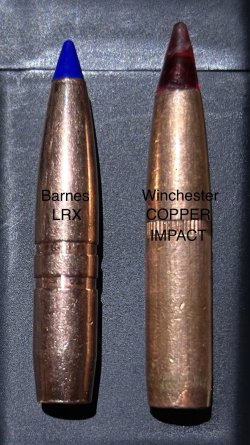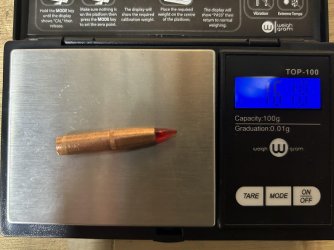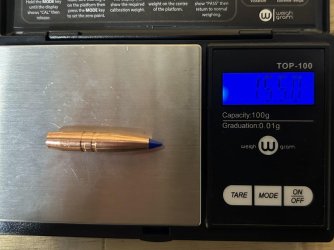Howdy,
I've been hunting for 32 years but am looking to increase my knowledge and capacities in long range shooting to more effectively take game in my home state of Montana. My current self-imposed first shot limit is 500 yards. I have put together a 6.8 Western using a Savage Mod 10 action and a Carbon Six barrel.
I've been shooting the Winchester Copper Impact in 162 grain.
I've read quite a lot about the importance of bullet design for maintaining energy on longer shots. However, I'm am gearing up to reload (first time ever) and looking at different bullets so decided to pull a bullet on the Copper Impact. What I found was puzzling. Winchester's bullet has very little discernible boat-tail, in fact, it appears to be much more of a flat based bullet. See attached pictures.
Why would a rifle company introduce their own factory ammo for their own new "long range" cartridge with what is basically a flat based bullet?
Is this just ignorance on my part? If a long boat-tail is not important for maintaining long range energy, please help me understand.
In the pictures you'll see a Barnes LRX 155 grain (blue tip) and a Winchester Impact 162 grain (red tip)
Using my inexpensive scale, I weighed 10 LRX bullets and everyone weighed exactly 155 grains. I only weighed one Winchester, but it weighed 161.8 grains. The finished smoothness of the Barnes was noticeably better than the Winchester.
I'd value any input you might have…
I've been hunting for 32 years but am looking to increase my knowledge and capacities in long range shooting to more effectively take game in my home state of Montana. My current self-imposed first shot limit is 500 yards. I have put together a 6.8 Western using a Savage Mod 10 action and a Carbon Six barrel.
I've been shooting the Winchester Copper Impact in 162 grain.
I've read quite a lot about the importance of bullet design for maintaining energy on longer shots. However, I'm am gearing up to reload (first time ever) and looking at different bullets so decided to pull a bullet on the Copper Impact. What I found was puzzling. Winchester's bullet has very little discernible boat-tail, in fact, it appears to be much more of a flat based bullet. See attached pictures.
Why would a rifle company introduce their own factory ammo for their own new "long range" cartridge with what is basically a flat based bullet?
Is this just ignorance on my part? If a long boat-tail is not important for maintaining long range energy, please help me understand.
In the pictures you'll see a Barnes LRX 155 grain (blue tip) and a Winchester Impact 162 grain (red tip)
Using my inexpensive scale, I weighed 10 LRX bullets and everyone weighed exactly 155 grains. I only weighed one Winchester, but it weighed 161.8 grains. The finished smoothness of the Barnes was noticeably better than the Winchester.
I'd value any input you might have…



